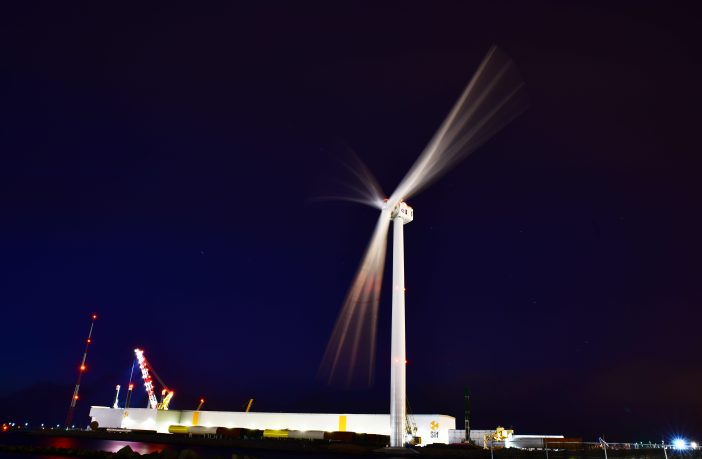- GE Renewable Energy announced today that its Haliade-X 12 MW prototype, the world’s most powerful offshore wind turbine, located in Rotterdam-Maasvlakte, has successfully produced its first kWh.
- Local teams will now proceed with the testing phase, during which GE will perform different types of measurements to obtain a Type Certificate for the Haliade-X in 2020.
John Lavelle, CEO of Offshore Wind at GE Renewable Energy, said “This first kWh is a critical achievement for our whole team, bringing to fruition our vision and all the hard work put in place. Innovation is part of GE’s DNA, and having successfully powered the world’s first 12 MW wind turbine, this illustrates it perfectly. There are more than 500 GE women and men behind this great success, who have been working for a year and a half to make this possible, and I’m taking this opportunity to thank all our partners and suppliers for their commitment and support.”
The successful completion of this project was due in part of the support and commitment of several entities like the City of Rotterdam, The Port of Rotterdam, TNO-ECN (a Dutch research and development entity performing testing on site), TKI Wind op ZEE (Top Consortium for Knowledge and Innovation Offshore Wind), RVO (Netherlands Enterprise Agency), French Investment Secretary (SGPI), and the French Agency for the Environmental and Energy Management (ADEME).
Get the dimensions of this mega turbine here.
GE Renewable Energy was recently selected as the preferred wind turbine supplier for the 120 MW Skip Jack and 1,100 MW Ocean Wind projects in the US, and the 3,600 MW Dogger Bank offshore windfarm in the UK. Serial production of the Haliade-X 12 MW will start at the second half of 2021.
In addition to this prototype unit, a second Haliade-X 12 MW nacelle is currently being assembled in Saint-Nazaire and will soon be shipped to ORE Catapult’s testing site in the UK, where it will undergo a program that will replicate real-world operational conditions to reduce the time required to validate performance and reliability. In August, a 107-long blade was also shipped to ORE Catapult’s site to undergo a full range of advanced static- and fatigue-testing procedures to demonstrate the blade’s ability to withstand peak wind conditions and to simulate the blade’s readiness for years of operation at sea.
Author: Bryan Groenendaal















